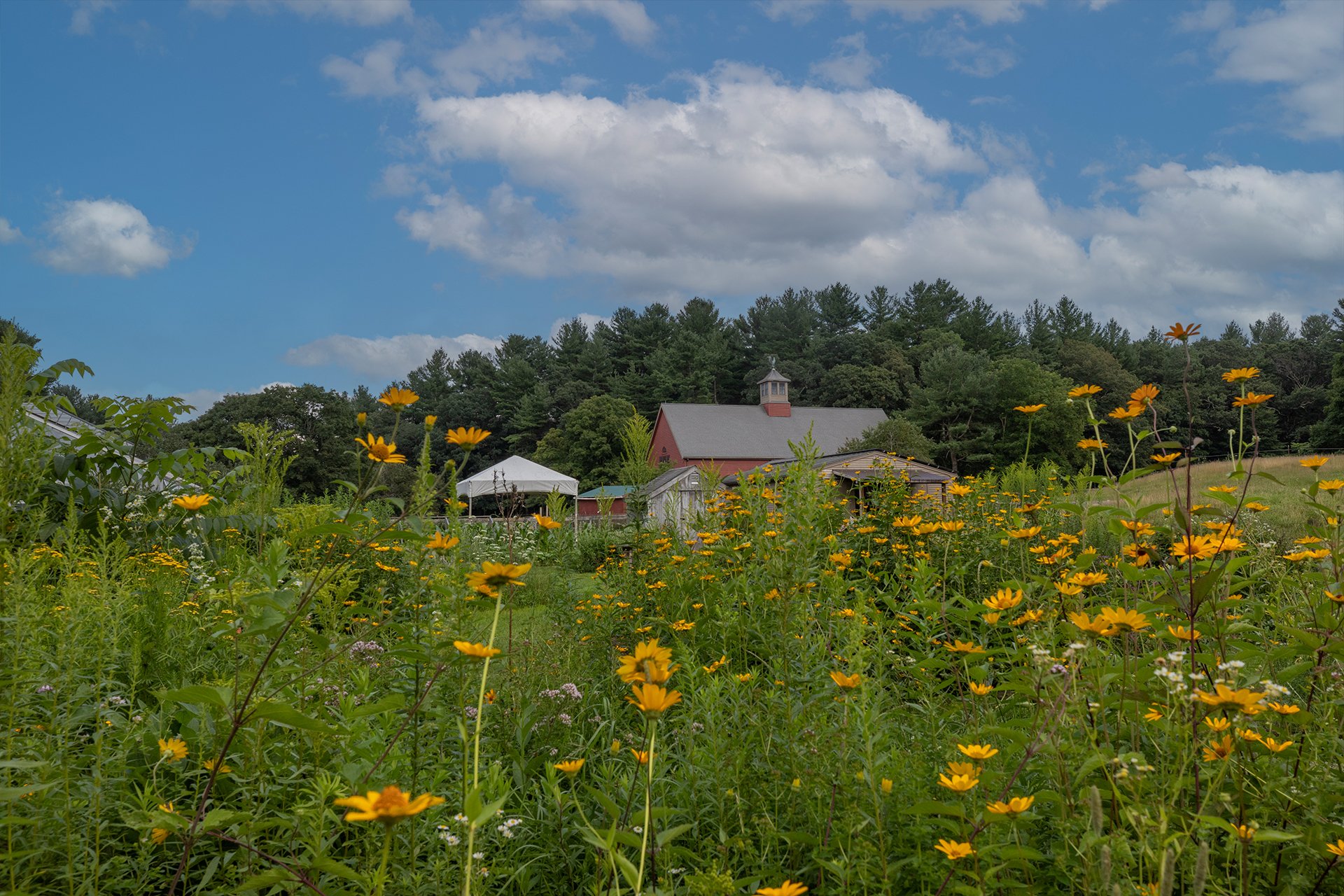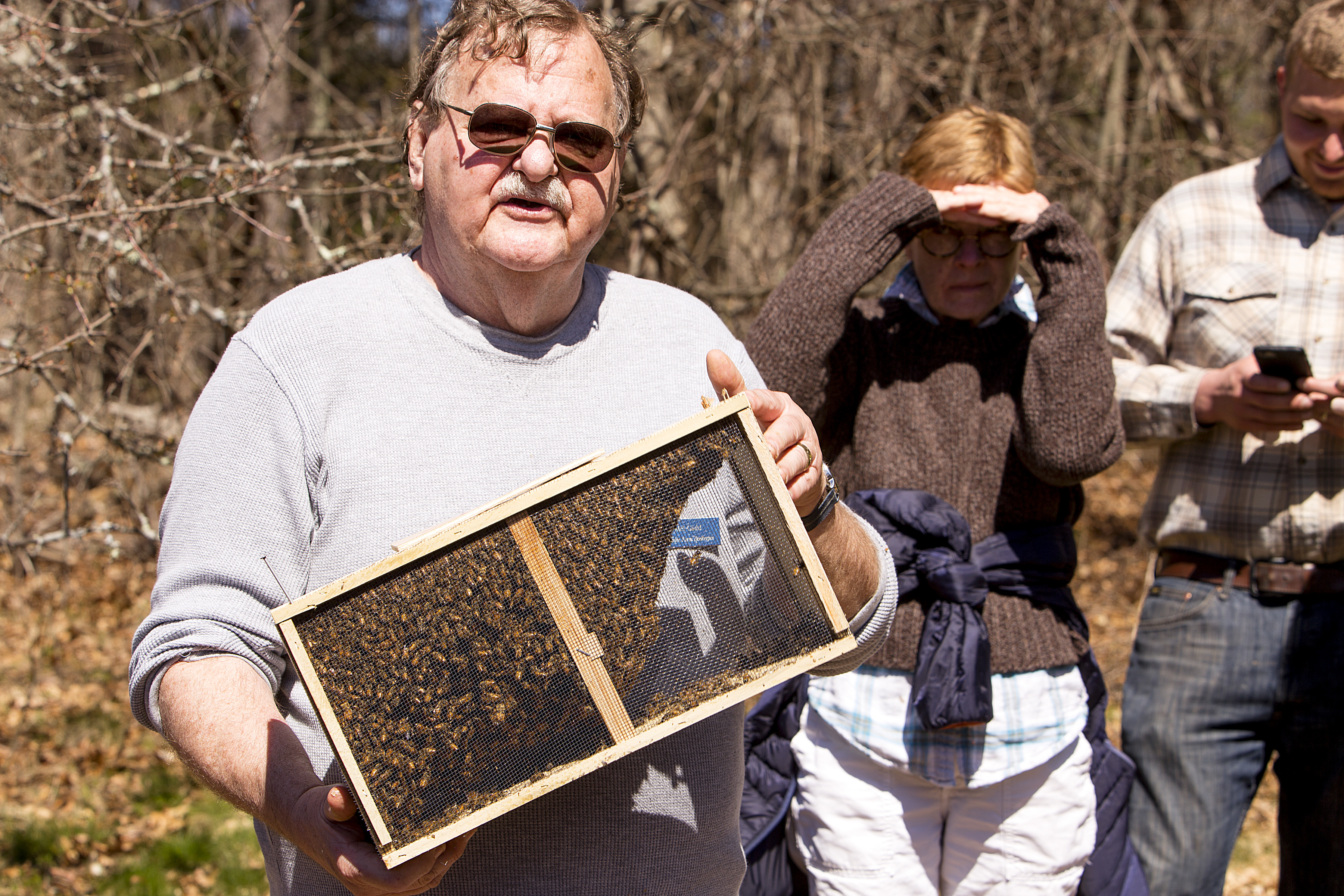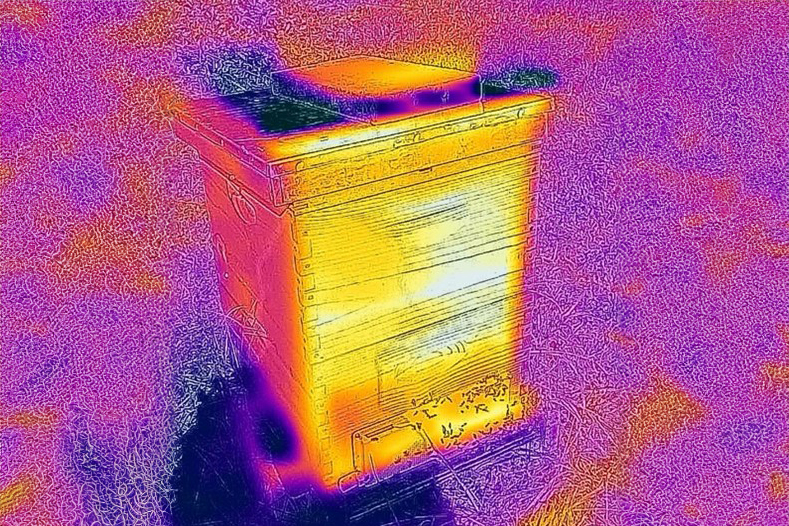During winter, many activities around Drumlin Farm cool down. The fields rest, birds fluff up and huddle, and livestock spend more time in their barns. But, within the 17 beehives around the sanctuary, things start heating up.
Even though honeybees only leave their hive on the mildest winter days, both the honeybees and Drumlin Farm beekeeper Mel Gadd continue to work throughout the chilly season to prepare for successful honeybee reemergence in the spring.
Inside the Hive
A honeybee has two winter jobs: keep the queen warm and fed. By late December to January, worker bees raise the hive’s temperature by balling up around the queen. Those on the outskirts of the ball move around while flapping their wings to raise the temperature to 90 degrees Fahrenheit or above. The queen needs these higher temperatures to be able to lay her eggs and for those eggs to develop into new bees that will hatch this coming spring.
Honeybees only emerge when temperatures inch above 50 degrees Fahrenheit, with most of these trips being used to relieve themselves. Bees are quite sanitary creatures and will not defecate inside. So, they wait for warmer days to head out and take care of business.
Taking Advantage of Technology
Throughout the winter, Mel heads into the field weekly to check on the viability of the hives. Since opening it up this time of year can cause serious damage by releasing the heat the worker bees spent so much energy creating, Mel turns to modern technology.
Some of Drumlin Farm’s hives have electronic sensors installed within them, which collect hourly temperature and humidity data. A quick visit and cell phone app creates a graph of this information over time, which shows Mel if a colony is doing well, needs some attention, or has not made it. Depending on the results, he might increase air flow, investigate why the temperature is too low, and in the case of a total loss, block the entrance to the hive so no others can enter.
As they say, a picture is worth a thousand words. Using a thermal imaging camera, Mel photographs the hives every two to three weeks to check their heat distribution. The yellow shades show warm, active bees. A blue or gray reading suggests the bees didn't survive and would prompt Mel to open it up to determine what caused the failure.
Preparing for Spring
Winter is prime time to prepare for spring beekeeping. This off season gives an opportunity to repair hive equipment, process captured beeswax, learn about new and innovative approaches to keeping our bees healthy, and process any stored honey reserves from last year’s season.
Are you thinking of keeping bees? Learn the basics of beekeeping, bee biology, acquiring bees, locating hives, and more during our Beekeeping for Beginners series beginning Tuesday, February 27.
Stay Connected
Don't miss a beat on all the ways you can get outdoors, celebrate nature, and get involved.





